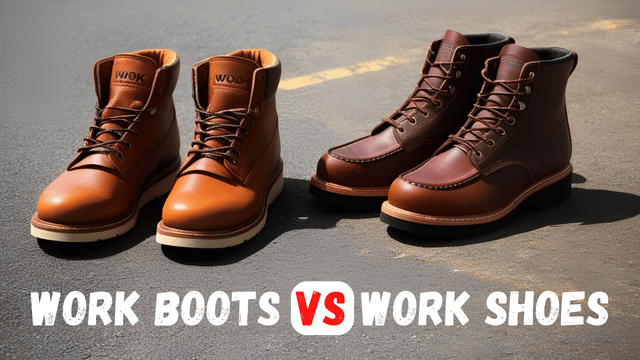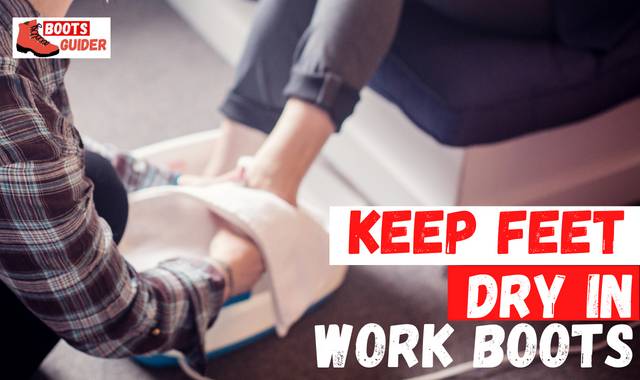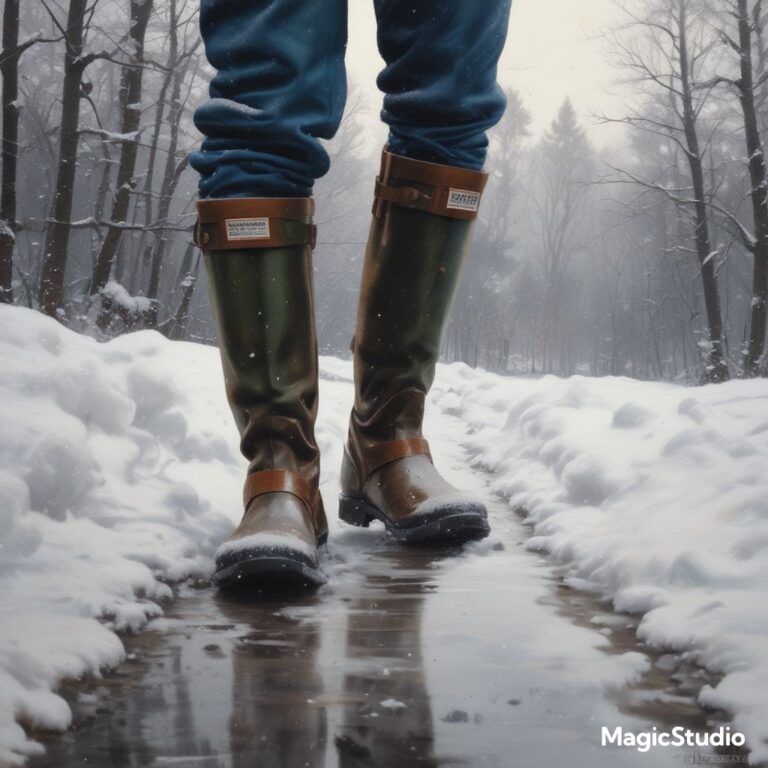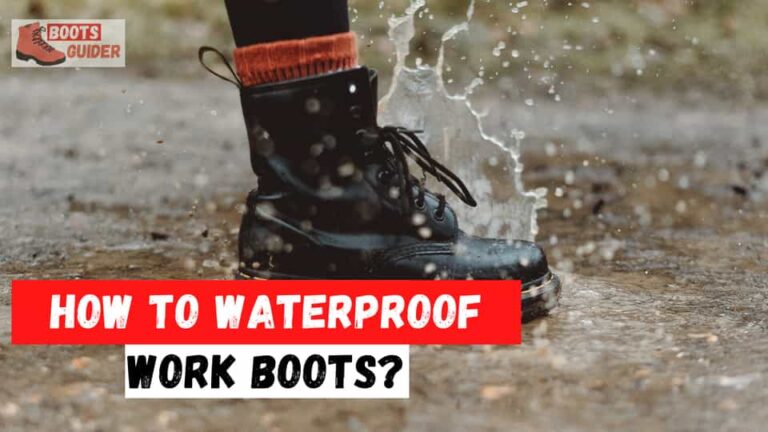Hiking Boots vs Work Boots – Finding the Perfect Fit for Every Adventure
Choosing the right pair of boots can be a bit like picking between two cool options: hiking boots vs work boots. Each has its cool features, and they’re made for different things. In this chat, we’re going to dig into these boots and check out what makes them special, what they’re good for, and how they’re different.
So, whether you love hiking or you’re just someone who needs solid boots for work, we’ve got the lowdown to help you decide which boots are the right fit for you. Let’s dive in!
Quick Comparision
| Features | Hiking Boots | Work Boots |
|---|---|---|
| Purpose | Outdoor activities and hiking | Physically demanding occupations |
| Protection | Protection against natural elements and weather conditions | Protection against workplace hazards and injuries |
| Comfort | Cushioned insoles and ankle support | Cushioned insoles and ergonomic designs |
| Traction | Excellent traction on outdoor terrains | Slip-resistant outsoles for industrial settings |
| Durability | Built to withstand rugged outdoor conditions | Designed for durability in demanding workplaces |
| Safety Features | Focus on foot protection in outdoor environments | Steel or composite toe caps, puncture-resistant midsoles |
| Breathability | Breathable materials for outdoor comfort | May offer breathability based on work environment |
| Longevity | Designed for outdoor longevity | Built to last in demanding work conditions |
About Hiking Boots
Hiking boots are purpose-built footwear designed specifically for outdoor enthusiasts who embark on challenging treks, hikes, and backpacking adventures. These boots prioritize comfort, traction, and durability to withstand various terrains and weather conditions. Let’s take a closer look at the features that make hiking boots an excellent choice for outdoor enthusiasts.
Comfort and Support
Hiking boots are designed with comfort and support in mind. They typically feature cushioned insoles, padded collars, and ankle support systems to minimize fatigue and prevent injuries during long hikes. The materials used in hiking boots, such as breathable mesh and leather, offer a balance between flexibility and support, ensuring a comfortable fit even on rugged trails.
Traction and Stability
One of the primary concerns while hiking is maintaining grip and stability on unpredictable surfaces. Hiking boots come equipped with sturdy outsoles that feature deep lugs and aggressive tread patterns, providing excellent traction on various terrains, including loose rocks, muddy trails, and slippery surfaces. This feature significantly reduces the risk of slips and falls, enhancing overall safety during outdoor adventures.
Durability and Protection
Hiking boots are built to withstand the elements and rough outdoor conditions. They are constructed with high-quality materials like full-grain leather, synthetic fabrics, and waterproof membranes. These components enhance the boots’ durability and protect the wearer’s feet from moisture, debris, and sharp objects found on the trails.
Breathability and Weather Resistance
Hikers often encounter diverse weather conditions, from scorching heat to unexpected downpours. Hiking boots are designed to provide adequate breathability, allowing air circulation to keep the feet cool and dry in warm conditions. Additionally, many hiking boots are equipped with waterproof membranes or coatings, ensuring feet stay dry during wet weather or when crossing streams.
About Work Boots
Work boots, on the other hand, are primarily designed for individuals in physically demanding occupations, such as construction, manufacturing, and industrial work. They prioritize safety, protection, and durability to withstand heavy-duty tasks and hazardous environments. Let’s explore the key features that make work boots a reliable choice for hardworking individuals.
Safety Features
Work boots are specifically engineered to protect the wearer’s feet from potential workplace hazards. They often come with reinforced steel or composite toe caps, providing protection against heavy objects and compression injuries. Additionally, they may feature puncture-resistant midsoles to safeguard against sharp objects or nails on the ground.
Durability and Longevity
In demanding work environments, boots need to be built to last. Work boots are crafted from rugged materials like full-grain leather, nylon, or synthetic blends that can withstand extreme conditions and frequent use. They are designed to resist abrasions, chemicals, and other potential sources of wear and tear, ensuring longevity and value for money.
Comfort and Support
Although work boots focus primarily on safety, comfort, and support are not neglected. Many work boot models feature cushioned insoles, shock-absorbing midsoles, and padded collars to provide all-day comfort, reduce fatigue, and prevent foot and leg pain. Some work boots also incorporate ergonomic designs and technologies to enhance arch support and promote proper posture.
Slip Resistance and Traction
In industrial or construction settings, slippery surfaces and oily floors pose a significant risk. Work boots often come with slip-resistant outsoles that meet industry standards, providing optimal traction and minimizing the chances of accidents due to slips and falls. This feature is essential for workers who navigate uneven or treacherous surfaces regularly.
Hiking Boots vs Work Boots
Now that we have explored the key features of hiking boots and work boots, let’s compare them side by side to highlight their differences and help you make an informed decision based on your specific needs. Also read about can you wear work boots on hike?
Purpose and Usage
Hiking boots are designed for outdoor enthusiasts who engage in hiking, trekking, and backpacking activities. They excel in providing comfort, support, and traction on various terrains, making them ideal for prolonged outdoor adventures.
Work boots, on the other hand, cater to individuals in physically demanding occupations that involve potential workplace hazards. They prioritize safety features and durability to protect the wearer’s feet and withstand harsh working conditions.
Protection and Safety
While hiking boots focus on protecting feet from natural elements like rocks, roots, and harsh weather conditions, work boots prioritize protection against workplace hazards, such as falling objects, sharp materials, and slippery surfaces. Work boots offer features like steel or composite toe caps and puncture-resistant midsoles to minimize workplace injuries.
Comfort and Ergonomics
Hiking boots are designed for long-distance walking and prioritize comfort and support during extended outdoor activities. Work boots, although built for durability and safety, also strive to provide adequate comfort and support for workers who spend hours on their feet. Both types of boots may incorporate cushioned insoles, shock-absorbing technologies, and ergonomic designs to enhance wearer comfort.
Terrain and Traction
Hiking boots are equipped with outsoles that offer excellent traction on various outdoor terrains, such as mountains, forests, and rocky trails. Work boots often focus on slip-resistant outsoles to enhance traction on slippery surfaces commonly found in industrial or construction environments.
Conclusion
In the hiking boots vs work boots battle, there is no definitive winner, as both types of footwear serve different purposes and cater to specific needs. Hiking boots excel in providing comfort, traction, and durability for outdoor adventures, while work boots prioritize safety features and protection for individuals in physically demanding occupations.
When making a choice between hiking boots and work boots, consider your specific requirements and the environment in which you’ll be using them. If you’re an outdoor enthusiast looking for comfort and stability on hiking trails, hiking boots are the way to go. On the other hand, if you work in a hazardous environment that requires safety and durability, work boots are the optimal choice.
Remember, investing in high-quality footwear that suits your needs is crucial for both outdoor enthusiasts and hardworking individuals. Choose wisely, and enjoy your adventures or workdays with confidence, knowing that your feet are well protected and supported.



